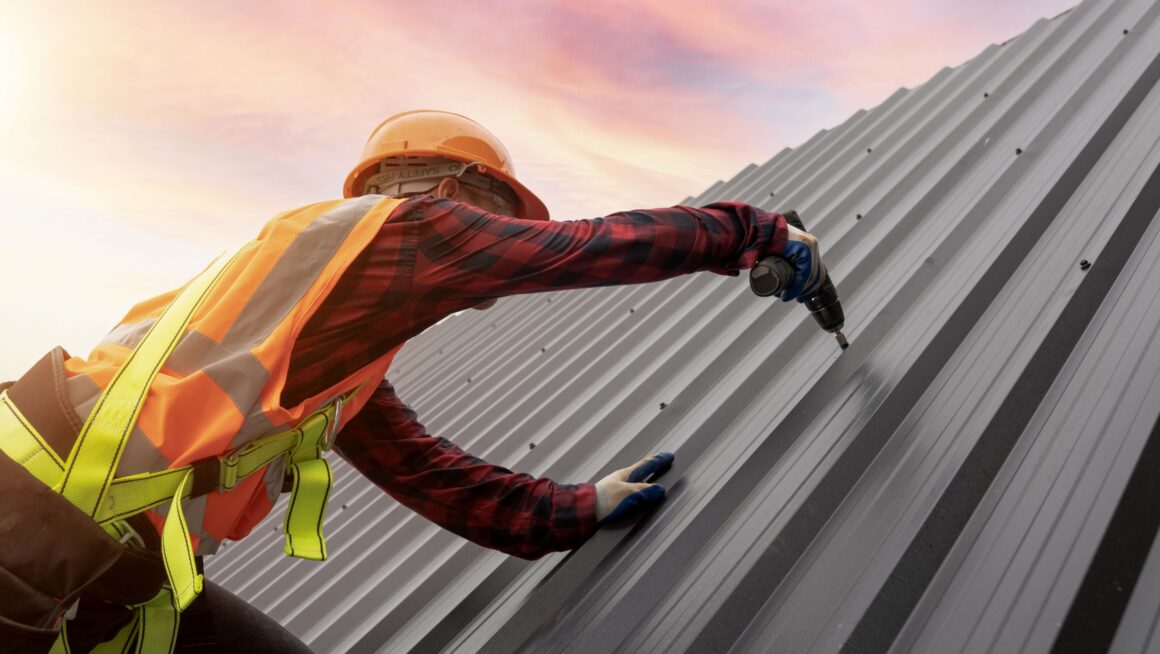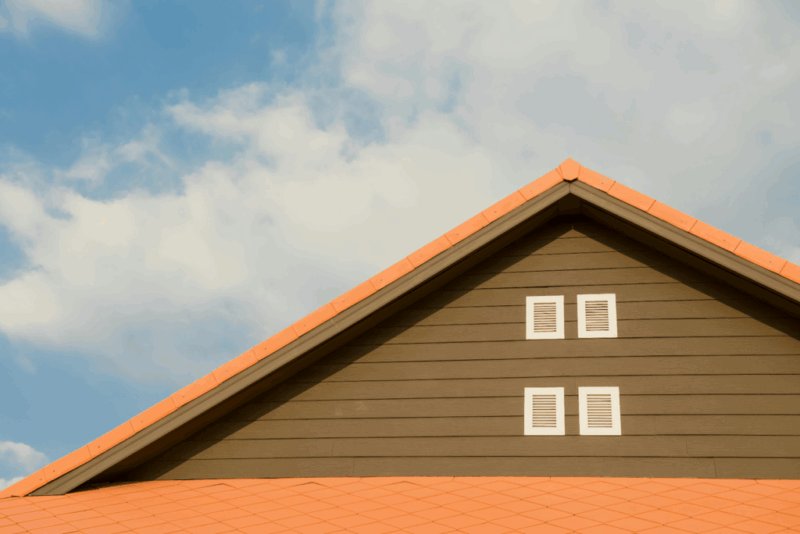
Electric bills across the country have climbed steadily over the past few years, and homeowners are feeling the impact. As energy costs rise, more people are realizing that their roof—often overlooked—plays a huge role in how much they spend heating and cooling their homes. Roofing materials determine how well a house reflects heat, retains warmth, and prevents air leakage. Choosing the right one can dramatically change monthly expenses and long-term efficiency.
That’s why more homeowners are searching for “metal roof contractors near me“ as they explore options that deliver both durability and energy performance. Metal roofs are no longer just for barns or industrial buildings. Modern coatings, colors, and installation systems have transformed them into energy-saving solutions for residential homes across every climate zone. The initial investment often pays for itself through lower heating and cooling bills, improved comfort, and reduced strain on HVAC systems.
In this article, we’ll look at how metal roofs impact home energy use, explore their performance in hot and cold regions, and explain how homeowners can calculate their potential savings. Whether you live under blazing southern sun or snowy northern skies, understanding your roof’s energy profile is the first step toward smarter home ownership.
How Metal Roofs Impact Home Energy Efficiency
Metal roofs affect energy performance in several interconnected ways. Their reflective surfaces, thermal emissivity, and built-in ventilation features all work together to stabilize indoor temperatures and reduce dependence on air conditioning or heating systems.
Reflective Properties of Metal Surfaces
Metal naturally reflects solar radiation rather than absorbing it. This means less heat penetrates the attic and upper floors, keeping interiors cooler during hot days. Studies by the U.S. Department of Energy show that reflective metal roofs can reduce cooling costs by up to 25%, especially in areas with intense sun exposure.
Even darker metal colors, when coated with high-performance paint finishes, can reflect a significant portion of sunlight. Cool-roof coatings enhance this effect, helping homeowners in warmer regions maintain comfortable indoor temperatures without overworking air conditioners.
Thermal Emissivity Explained
Reflection is only half of the equation. Once metal heats up, it also releases that heat efficiently. This property, called thermal emissivity, allows metal roofing to cool down quickly after sunset, unlike asphalt shingles that retain warmth well into the night.
High emissivity prevents heat from transferring into the home during warm evenings, improving nighttime comfort and reducing the “urban heat island” effect. This combination of reflection and fast heat release makes metal an ideal material for consistent temperature regulation.
Air Gap Ventilation Benefits
A lesser-known advantage of metal roofs is their built-in ventilation capability. Many systems are installed over a raised deck or battens, creating an air gap between the metal panels and the underlying structure. This gap allows natural airflow to dissipate heat and moisture before it reaches the insulation layer.
Properly ventilated roofs can lower attic temperatures by up to 40°F compared to poorly vented systems. This not only boosts energy performance but also extends the lifespan of the roof by preventing moisture accumulation and mold growth.
Energy Performance in Hot and Humid Climates
For homeowners in southern states—think Texas, Florida, Louisiana, or Georgia—metal roofing can deliver substantial cooling savings. The material’s ability to reflect solar radiation and release heat rapidly helps homes stay cooler even on sweltering summer days.
Cooling Cost Reductions in Southern States
Research from the Oak Ridge National Laboratory shows that energy-efficient metal roofing can cut annual cooling expenses by 20–30%. In places like Houston or Miami, where air conditioning runs almost year-round, that translates into hundreds of dollars saved annually. Over time, these savings help offset the higher upfront installation costs associated with metal roofing.
UV Protection and Heat Reflection
High-quality metal roofing finishes are engineered to resist ultraviolet degradation. These UV-resistant coatings don’t just preserve the roof’s appearance—they also improve its reflectivity. The result is a surface that stays cooler and protects underlying materials from heat damage.
Modern reflective pigments embedded in paint systems work even on darker shades, allowing homeowners to choose stylish colors without sacrificing energy performance.
Best Metal Roof Colors for Hot Climates
Color choice plays a big role in how much heat a roof absorbs. Lighter shades—such as white, beige, silver, or pale gray—reflect the most sunlight. In humid, sun-drenched regions, these tones can lower roof surface temperatures by up to 50°F compared to darker options.
However, thanks to cool-roof paint technology, even mid-tone or dark metallic colors now offer improved reflectivity. This allows homeowners to balance curb appeal and efficiency without compromise.
Metal Roofs in Cold Climate Zones
While metal roofing excels in hot climates, its benefits in cold regions are just as impressive. In areas that experience snow, freezing rain, and long winters, metal roofs help homeowners conserve heat, prevent damage, and lower energy consumption during the coldest months of the year.
Snow Shedding Capabilities
Snow buildup is one of the biggest culprits behind roof damage in northern regions. The slick, smooth surface of metal allows snow and ice to slide off easily, preventing the excess weight that can strain a roof’s structure. This self-shedding property also helps reduce the risk of leaks caused by melting snow pooling around vents or valleys.

When snow melts naturally and doesn’t linger, the attic remains drier, and insulation performs more effectively. The result is better temperature regulation throughout the home and less risk of moisture-related issues, such as mold or rot.
Ice Dam Prevention and Energy Loss
In traditional roofing systems, warm air escaping through the attic melts the underside of the snow layer, which then refreezes near the roof’s edge. These ice dams trap water and can cause it to seep beneath shingles. Metal roofs disrupt that cycle. Their reflective surface stays cooler and helps prevent uneven melting, reducing the chance of ice dams forming.
Proper installation is key. When paired with high-quality insulation and underlayment, a metal roof keeps indoor heat where it belongs—inside. This containment reduces energy loss through the attic, meaning your heating system doesn’t have to work as hard.
Heating Cost Savings in Northern Regions
Metal roofs don’t just keep the cold out—they also improve the way your home retains warmth. Many modern systems now include integrated insulation layers or radiant barriers that reflect heat back into the living space. In states like Minnesota, Michigan, and Maine, homeowners report saving up to 15% on winter heating costs after switching to metal roofing.
When combined with proper attic insulation and sealing, a metal roof acts like an energy shield. It minimizes drafts, prevents temperature fluctuations, and keeps the home’s interior consistently comfortable, even in subzero weather.
Calculating Your Potential Energy Savings
Understanding how much you can save with a metal roof depends on your climate zone, roofing color, and home design. Start by reviewing your current energy bills and identifying seasonal spikes. Then, compare those figures to the potential efficiency gains from reflective coatings, improved ventilation, and better insulation.
Many energy auditors and roofing specialists offer software-based simulations that estimate annual savings. These tools factor in your location, sun exposure, and roof slope to provide accurate projections. In some states, utility companies even offer rebates or tax incentives for installing cool-metal roofing systems.
When evaluating bids, ask contractors to include energy performance estimates in their proposals. Reliable professionals will provide realistic numbers rather than exaggerated claims. The savings may vary, but in nearly all cases, a well-installed metal roof pays for itself over time—not only through lower bills but also through reduced maintenance and exceptional longevity.
Metal roofing isn’t just about durability—it’s about smarter living. Whether reflecting intense summer heat or shedding heavy winter snow, metal roofs adapt to different environments with remarkable efficiency. Their combination of beauty, sustainability, and performance has made them one of the most cost-effective upgrades for homeowners nationwide.
As more people turn to energy-conscious home design, the roof above your head becomes a key part of the solution. Investing in a quality metal roof today means lower bills, greater comfort, and a home that performs beautifully in any climate zone.







